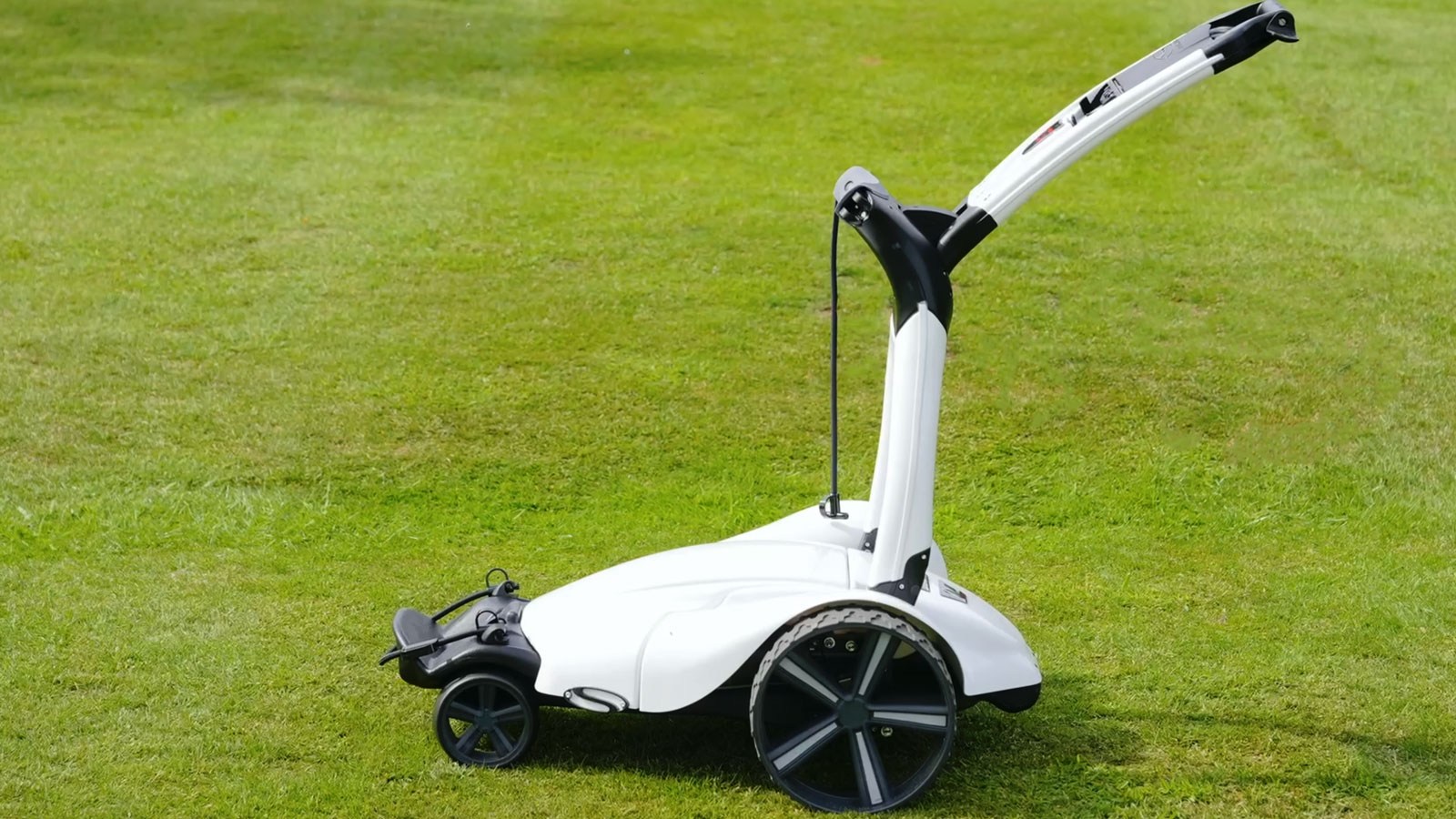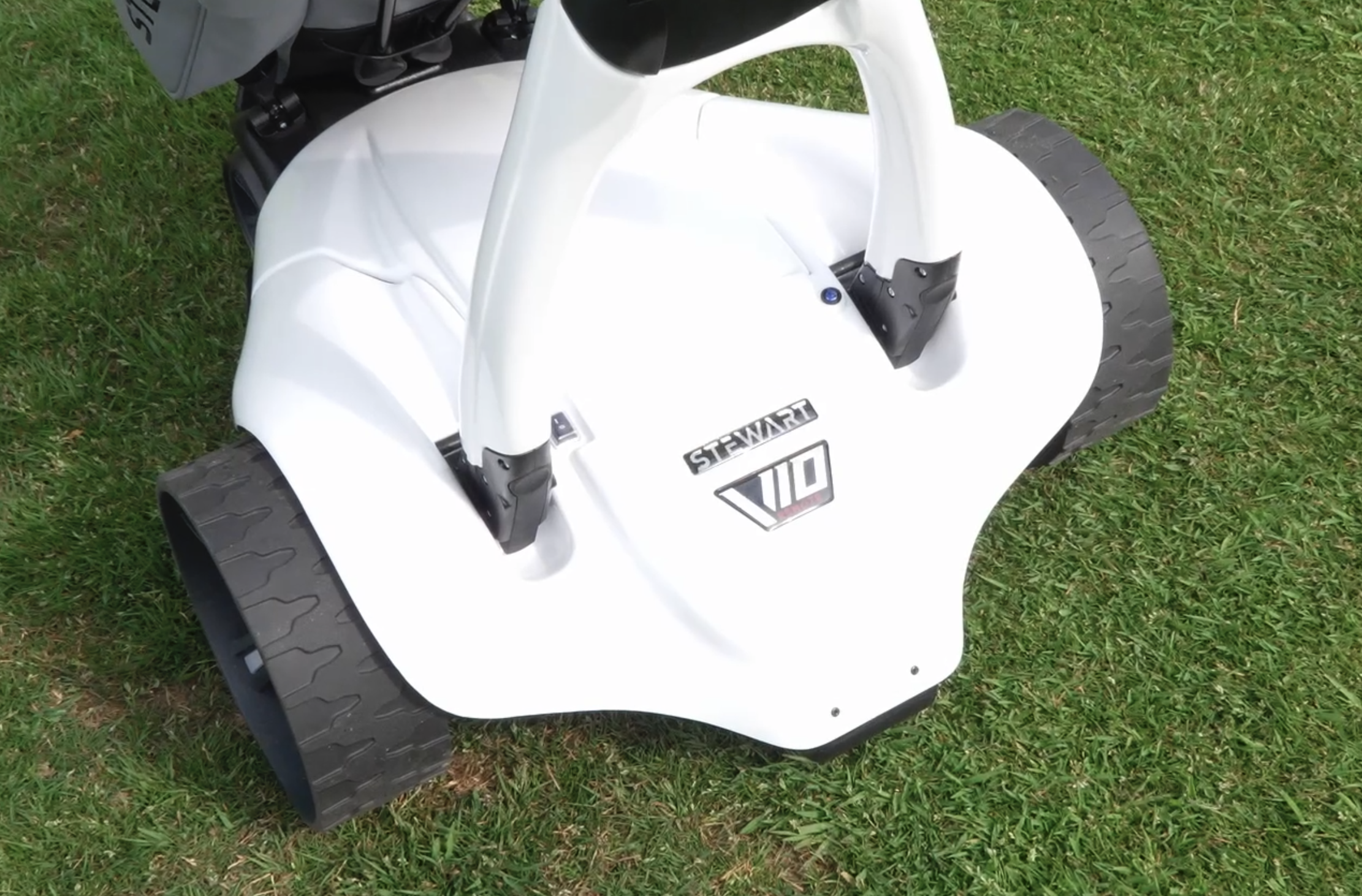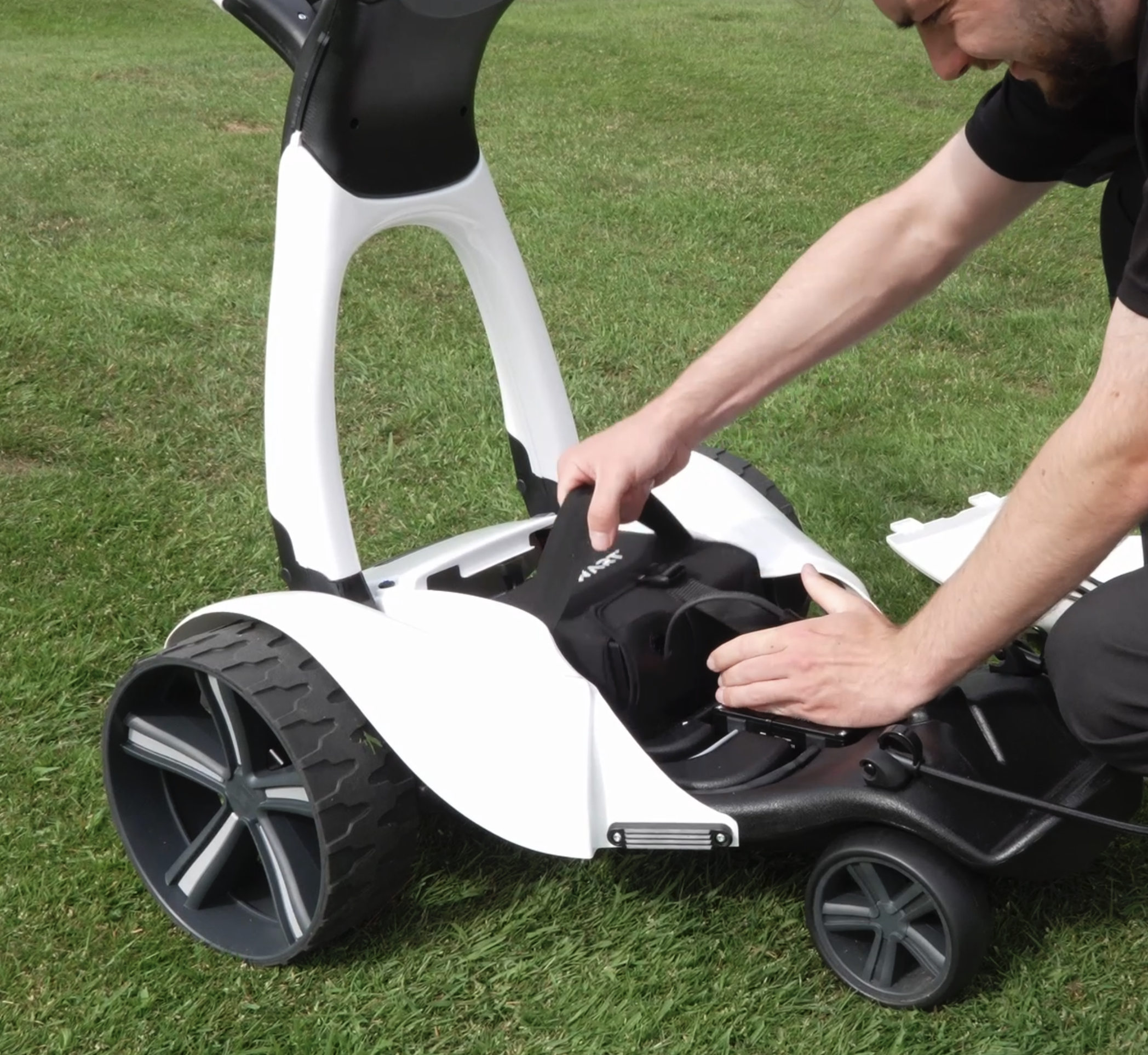Stewart Golf V10 Remote Electric Trolley Review
How did Stewart Golf's best value remote electric trolley perform when we took it out onto the golf course?

One of the best remote trolley experiences on the market, packaged at a very competitive price. Though a few design quirks and its large folded footprint will limit the scope of the V10's appeal, there is no doubt that the quality and execution of remote technology cements Stewart's position as the authority on remote golf trolley technology.
-
+
Class-leading remote functionality
-
+
Wide wheelbase makes for a stable ride over bumpy terrain
-
+
Good value for money in the remote electric trolley space
-
+
Unique looks
-
-
Large footprint when folded won't suit everyone
-
-
Slightly awkward folding mechanism
Why you can trust Golf Monthly

Stewart Golf has been mastering the art of designing and engineering remote golf trolleys for over 20 years. In that time, we've been introduced to the groundbreaking follow technology of the Q Follow and the more recent remote updates in the Vertx Remote. In the new V10 Remote, the brand has opted to head back into its rich history for its design cues. Ultimately, this trolley has been launched to give golfers a more entry-level route into the rapidly growing remote electric trolley market. Using a chassis design inspired by the old X Series that is built around the very latest technology that powers the excellent Vertx Remote, Stewart has added another strong remote trolley to its arsenal.
The first thing you are likely to have noticed is just how big (and white) the version I am testing is. The V10 does have a very sizeable footprint compared to some other remote and non-remote trolleys. I'll come on to why that is broadly a good thing a little later, but I will say it makes living with the trolley a little more complex than the Vertx or Q Follow.

The remote is compact enough while being superbly responsive and intuitive to commands.
Though more lightweight than the aforementioned trolleys, there is no clear grab handle to take the trolley in and out of your car boot, and the sheer footprint of the chassis makes it fiddly to fit even into larger car boots. This trolley is not for the golfer who is limited on space. The handle area folds in two positions down into the heart of the chassis, but this mechanism for folding is a little more fiddly than many other trolleys. A compact folding chassis was never the MO when Stewart designed this trolley, however, so I don't want to be too critical of the large footprint. Consider this a public service announcement for those after a new electric trolley, but are perhaps short on space at home or in the car.
Once you're set up and ready to head onto the golf course, the V10 comes into its own. You can tell Stewart has been diligently engineering remote-controlled golf trolleys for as long as they have, as the remote experience is faultless.

Folding the V10 is a little trickier than other trolleys. It requires two buttons to be pressed simultaneously at the bottom of the handle to trigger the process.
That wide base and low centre of gravity that makes the V10 a little awkward to take in and out of the car makes it one of the most stable remote trolleys I've tested. I could send it across bumpy, slopy and undulating terrain with all my confidence, and it tackles awkward ground conditions with the ease that allows you to enjoy walking the golf course even more.
It should've been no surprise to me that the V10 was so easy to control, as it uses the same operating system as the Vertx Remote. The Cortex microchip assesses the environment around it 1000 times per second to react to the ground around it.
Coupled with the brand's Active Terrain Control - which keeps the trolley maintaining the speed and direction intended regardless of gradient - and the V10 absolutely matches the Vertx Remote for usability. Though I was really impressed with how well the Alphard Cybercart worked with its remote, Stewart is still the leader when it comes to remote-controlled technology, and the V10 is proof of that.
Subscribe to the Golf Monthly newsletter to stay up to date with all the latest tour news, equipment news, reviews, head-to-heads and buyer’s guides from our team of experienced experts.

While there is no anti-tip rear wheel, the area that juts out at the rear of the chassis is there to stop the trolley from tipping over as it goes up hills.
Having tested so many remote electric trolleys, I know that the best ones are those where you need to put as little input as possible to use them comfortably. The V10 passes this test with flying colours. It's so simple, even the biggest luddite you know would be able to pick it up and feel comfortable controlling it within a couple of holes at most.
Unlike many of the best remote trolleys, the V10 doesn't have an anti-tip rear wheel, but rather just an area of the chassis that stops it from tipping over on a steep uphill gradient. While this does a good job at stopping the trolley from capsizing, it's a little unusual not to have a wheel in this position, but it broadly works.
The battery sits under the chassis, under a hood that you take on and off. The battery tech itself is a little dated, but the 36-hole battery life and the fact you don't see it when you're using the trolley means I'm not to worried it's a little byzantine compared to the modern lithium batteries we've become used to on the likes of the Motocaddy M7 GPS Remote and PowaKaddy RX12 GPS.

The battery is housed centrally under a hood you have to manually take off. Though it's a little rudimentary, it's all hidden away when you use the trolley.
What this battery does is keep the price of this trolley very much on the lower end in this part of the market. Only the new Motocaddy ME remote can boast an RRP below £1000, making the £1099 for the V10 very competitive. It sits nicely in the rest of the Stewart family, with the price inching up with each model - the Vertx at £1249 and the Q Follow at £1900 fill out the rest of the range. Alongside the Alphard Cybercart at £1249, the Motocaddy M7 GPS Remote at £1449 and PowaKaddy RX12 GPS at £1549, you can get a better feel for where the V10 sits.
Though I think the V10 is a niche product for a niche golfer, it is no doubt one of the best remote trolley experiences money can buy. Thanks to the tech under the hood, the V10 is a joy to use, while its unique and bold looks will suit the right golfer who doesn't have an issue with space.

Dan has been with the Golf Monthly team since 2021. He graduated with a Master's degree in International Journalism from the University of Sussex and looks after equipment reviews and buying guides, specializing in golf shoes, golf bags, golf trolleys, and apparel reviews. Dan is also a co-host of Kick Point: The Golf Gear Show. A left-handed golfer, his handicap index is currently 7.1, and he plays at Fulford Heath Golf Club in the West Midlands.
Dan's current What's In The Bag:
Driver: Cobra DS-Adapt X
Mini driver: TaylorMade R7 Quad Mini
Fairway: Ping G440 Max 21°
Irons: Titleist T250 (5), Titleist T100 (6-PW)
Wedges: Ping Glide Forged Pro (50, 56, 60)
Putter: TaylorMade Spider Tour X
Ball: Titleist Pro V1x
Grip: Golf Pride Tour Velvet
Bag: Vessel Sunday III
You must confirm your public display name before commenting
Please logout and then login again, you will then be prompted to enter your display name.